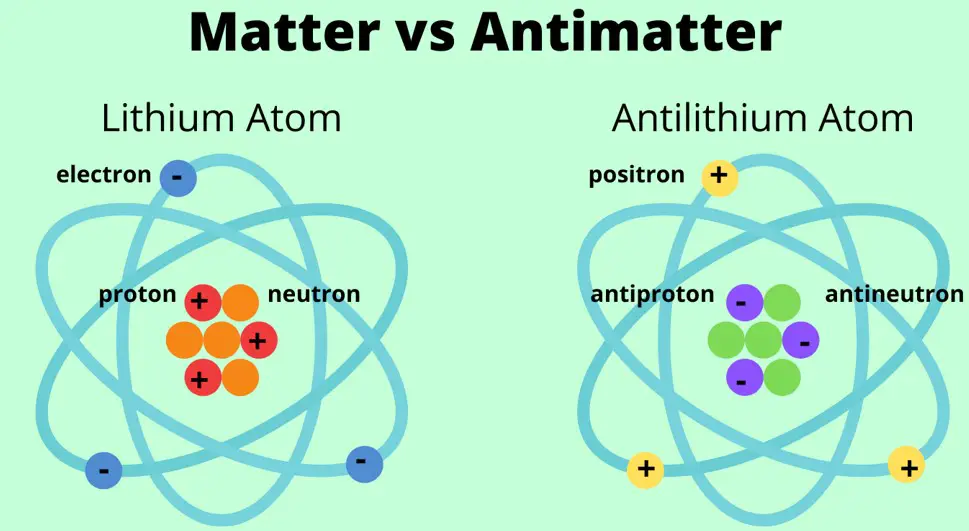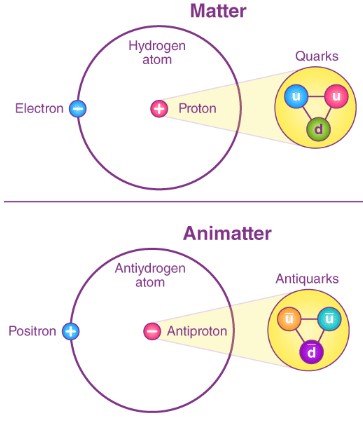The cosmos is a vast expanse of mysteries, among which the duality of matter and antimatter presents a fascinating enigma. At the heart of physics and cosmology lies this intriguing contrast, painting a picture of a universe where every particle has a mirror image with opposite charge. This fundamental aspect not only shapes our understanding of the physical universe but also hints at the profound laws that govern it.
Matter and antimatter are identical in mass but opposite in charge, and when they come into contact, they annihilate each other, releasing a tremendous amount of energy. This interaction underpins much of our universe’s early development and continues to influence theoretical and applied physics. The exploration of this duality not only expands our knowledge of the cosmos but also has practical implications in medicine, technology, and energy.
Delving into the differences between matter and antimatter offers insights into the universe’s formation, the forces that shape it, and the potential for harnessing these principles in future technological advancements. From the annihilation energy that powers potential future technologies to the theoretical underpinnings of the cosmos, the study of matter and antimatter is a gateway to understanding the universe’s most profound secrets.

Basic Concepts
Matter Defined
Matter is everything that occupies space and has mass. From the air we breathe to the planets in our solar system, matter makes up the physical substance of the universe. Its composition can vary widely, but it is fundamentally made up of atoms and molecules, which themselves consist of smaller particles like protons, neutrons, and electrons.
Composition and Characteristics
Atoms, the building blocks of matter, comprise a nucleus surrounded by electrons. The nucleus contains protons and neutrons, with the number of protons defining the chemical element. Matter’s characteristics, such as density, state (solid, liquid, gas), and electrical conductivity, arise from the arrangement and interaction of these atoms.
Types and Examples
Matter is classified into pure substances and mixtures. Pure substances, like elements and compounds, have a uniform and definite composition. Water (H2O) and oxygen (O2) are examples of pure substances. Mixtures, like air or saltwater, consist of two or more substances physically combined.
Antimatter Explained
Antimatter is similar to matter in mass but opposite in some properties, such as electrical charge. An antiparticle has the same mass as its corresponding particle but with an opposite charge. The positron, for example, is the antiparticle of the electron and carries a positive charge.
Definition and Properties
Antimatter particles are mirror images of matter particles, with identical mass but opposite charge. When matter and antimatter come into contact, they annihilate each other, producing energy in the form of photons.
How It Contrasts with Matter
The primary difference between matter and antimatter lies in their electrical charges. This fundamental contrast means that while matter and antimatter are similar in structure, their interactions with the surrounding universe are markedly different.
Formation and Annihilation
Origins
The universe began with the Big Bang, which produced nearly equal amounts of matter and antimatter. However, the observable universe now appears to consist almost entirely of matter. This asymmetry is one of the most compelling mysteries in physics.
Early Universe and Symmetry
Initially, the universe had a perfect balance between matter and antimatter. However, as it cooled and expanded, this symmetry broke, leading to a slight excess of matter over antimatter. This imbalance is why the universe today is made predominantly of matter.
Current Theories on Separation
Several theories exist to explain the matter-antimatter asymmetry. One popular theory suggests CP violation, where the laws of physics apply differently to particles and antiparticles, could be responsible. Another theory posits that in the early universe, certain processes favored the creation of matter over antimatter.
Annihilation Process
When matter and antimatter particles meet, they annihilate each other, completely converting their mass into energy. This process is a direct manifestation of Einstein’s equation, �=��2E=mc2, demonstrating the conversion of mass into energy.
Matter-Antimatter Interactions
These interactions are not just theoretical but have been observed in particle accelerators and cosmic phenomena. When an electron meets a positron, for instance, they annihilate, releasing gamma rays.
Energy Release and Applications
The annihilation process releases a vast amount of energy, which has potential applications in energy production and medical treatments. Though harnessing this power on a practical scale remains a challenge, it represents a future energy source.
Detection and Applications
Detecting Antimatter
Detecting antimatter requires sophisticated technology due to its tendency to annihilate upon contact with matter.
Technologies and Methods
Instruments like the Alpha Magnetic Spectrometer (AMS) on the International Space Station and facilities like CERN use magnetic fields to separate particles from antiparticles, allowing for the study of antimatter in space and on Earth.
Challenges in Observation
The main challenge in detecting antimatter lies in its scarcity in the universe and its annihilation upon encountering matter. Advanced detectors and vacuum systems are necessary to study antimatter without it annihilating.
Practical Uses
Despite the challenges, antimatter has promising applications, particularly in medicine and physics research.
Medical Imaging
In Positron Emission Tomography (PET) scans, a small amount of radioactive material emits positrons. When these positrons meet electrons in the body, the resulting annihilation produces gamma rays, which are then detected to create detailed images of the body’s internal structures.
Particle Accelerators and Research
Particle accelerators, like the Large Hadron Collider at CERN, create conditions that allow for the production and study of antimatter. This research not only helps us understand the universe’s fundamental laws but also explores the potential for antimatter in energy production and advanced propulsion systems for space exploration.

Cosmic Mystery
Imbalance Question
One of the universe’s most perplexing questions is why matter seems to dominate over antimatter. According to the Big Bang theory, the early universe should have produced equal amounts of matter and antimatter. Yet, the observable universe is almost entirely made of matter.
Why Matter Dominates the Universe
The dominance of matter over antimatter is a fundamental puzzle in cosmology. Several hypotheses propose that during the universe’s infancy, slight asymmetries in the laws of physics led to the annihilation of more antimatter than matter. This left a surplus of matter, which went on to form stars, planets, and galaxies.
Theoretical Explanations
CP violation is a well-discussed theory that suggests the laws of physics might not apply equally to matter and antimatter. Experiments have observed CP violation in certain subatomic particles, indicating that under specific conditions, the universe does not treat matter and antimatter symmetrically. This imbalance could be the key to understanding why our universe is matter-dominated.
Research and Discoveries
The quest to understand the matter-antimatter imbalance drives numerous research initiatives and experiments across the globe.
Ongoing Experiments
Experiments such as those conducted at CERN‘s Large Hadron Collider and other particle physics laboratories worldwide are crucial in studying antimatter. They aim to produce, contain, and study antimatter particles to uncover differences between matter and antimatter.
Impact on Understanding the Universe
Discoveries in this field could revolutionize our understanding of the universe’s formation and evolution. Understanding why matter dominates could lead to new insights into the Big Bang, dark matter, and energy and potentially uncover new physics beyond the current models.
Antimatter in Popular Culture
Science Fiction and Reality
Antimatter frequently appears in science fiction as a powerful energy source or a destructive weapon. Its real-world properties and potential have inspired numerous narratives in movies, books, and TV shows.
Representation in Media
In media, antimatter is often portrayed as the ultimate energy source or a doomsday device. While these portrayals can be exaggerated, they are rooted in the true potential of antimatter to release vast amounts of energy through matter-antimatter annihilation.
Influence on Public Perception
The depiction of antimatter in popular culture has significantly influenced public interest and perception. It has sparked curiosity and fascination, encouraging a broader interest in physics and the mysteries of the universe. However, it also necessitates the role of scientists and educators in clarifying the distinctions between fiction and reality.
Future Prospects
Advancements and Hurdles
The study of antimatter is at the forefront of modern physics, pushing the boundaries of technology and scientific understanding.
Technological Progress
Advancements in particle physics and accelerator technology have made it possible to create, contain, and study antimatter in greater quantities and with greater precision than ever before. These developments are crucial for future experiments and potential applications of antimatter.
Potential Future Applications and Implications
The potential applications of antimatter are vast and varied, ranging from medical treatments to space travel. Antimatter could revolutionize cancer therapy through targeted annihilation of tumors or become the basis for interstellar propulsion systems, given its immense energy release upon annihilation with matter. However, the challenges of producing, storing, and using antimatter safely and efficiently remain significant.
- Medical Treatments: Research into antimatter’s potential for treating cancer through Positron Emission Tomography (PET) scans and direct tumor annihilation is ongoing. These treatments could offer more precise and less invasive options for cancer patients.
- Space Travel: Theoretical proposals for antimatter propulsion suggest that it could significantly reduce travel time within our solar system and beyond. Antimatter’s high energy density makes it an attractive option for future deep space missions.
The journey into the realm of antimatter, from its theoretical origins to its potential future applications, reflects the human quest for knowledge and the desire to harness the universe’s fundamental forces. As technology advances, the challenges of working with antimatter may be overcome, opening new frontiers in science, medicine, and space exploration.
Frequently Asked Questions
What is Antimatter?
Antimatter is the counterpart to matter, composed of antiparticles that have the same mass as particles of ordinary matter but opposite charges. For example, the antiparticle of the electron is the positron, which carries a positive charge. When matter and antimatter particles meet, they annihilate each other, releasing energy in the form of radiation.
How is Antimatter Created?
Antimatter is created in high-energy processes where enough energy is present to form both a particle and its antiparticle. This can occur naturally, such as in cosmic ray interactions or artificially in particle accelerators. In these accelerators, particles are accelerated to high speeds and collided, creating various particles and antiparticles.
Why Does Matter Dominate the Universe?
The dominance of matter over antimatter in the universe is one of physics’ biggest mysteries. Current theories suggest that during the Big Bang, conditions were such that a slight asymmetry favored the creation of matter over antimatter. This imbalance allowed matter to prevail after matter-antimatter annihilations, leading to a universe filled predominantly with matter.
Can Antimatter be Used as Energy?
Antimatter holds the potential for being a highly efficient energy source, as matter-antimatter annihilations release a vast amount of energy. However, producing and storing antimatter in sufficient quantities for practical use is extremely challenging with current technology. Research continues into potential uses, particularly in fields such as space propulsion and targeted cancer treatments.
Conclusion
Exploring the difference between matter and antimatter unveils a realm where the fundamental laws of nature manifest in their most extreme form. This journey not only enriches our understanding of the universe’s fabric but also opens avenues for technological innovations that could transform future societies. The pursuit of knowledge in this domain exemplifies the human quest to comprehend our place in the cosmos and harness the laws of physics for the betterment of humanity.
As we stand on the brink of potentially revolutionary breakthroughs inspired by antimatter research, the importance of continued exploration in this field cannot be overstated. The mysteries of matter and antimatter continue to challenge our finest minds, promising a future where the boundaries of science and technology may expand beyond what we currently imagine.

